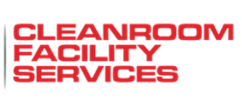Cleanroom Certification & Testing Services
Annual Certification That Keeps You Compliant
We serve the Medical Device, Pharmaceutical, Aerospace, and Semiconductor industries with thorough testing of FFUs, Biological Safety Cabinets (BSC), fume hoods, laminar flow benches, and isolators.
Our ISO 9001:2015-certified technicians follow ISO 14644-2:2015 standards to certify ISO Class 1–9 cleanrooms annually.
With ACM, your cleanroom operates at maximum efficiency and remains audit-ready year-round, helping you meet regulatory requirements and avoid costly deviations.
Comprehensive Cleanroom Certification Tests
ACM delivers a full suite of cleanroom testing and certification services to ensure your environment meets ISO Class 1–9 standards and supports ongoing regulatory compliance. Our certified technicians use advanced tools and techniques to assess airflow, filtration, pressure, and particulate levels—delivering the data you need to optimize performance, reduce risk, and maintain certification.
Primary Certification Tests
Additional Services
Custom EM Program Features
ACM develops tailored Environmental Monitoring (EM) programs to help facilities maintain a validated state of control and meet stringent regulatory expectations. From sampling design to data analysis, our services are structured to detect potential risks before they become costly issues—empowering your team with reliable, actionable insights.
For Effortless Compliance, trust the Environmental Monitoring of your cleanroom to the experts in the business. For more information on EM testing procedures, see below. You may also contact us and speak to one of our dedicated professionals for a consultation on how ACM can best service all your cleanroom needs.
What Does ACM Monitor?

High contact equipment such as tabletops, process equipment, walls and floors are monitored regularly to ensure that the cleaning program is consistent and compliant.

Personnel are monitored to assess the effectiveness of the gowning program. A qualified person uses contact plates to monitor areas of the gowned body that may interact with the sterile field or product exposure areas. These may include gloved hands, forearms, or other areas.

Air samples are measured in two ways: the first by drawing in predetermined volumes of air over a sterile growth plate and the second by exposing growth plates to the environment for a specific period of time.
A Hepa HVAC system can account for 99.97% of all of the non-viable and viable particulates throughout the controlled area; the remaining 0.03% will settle and contribute to Alert and Action levels.

Surfaces are monitored to measure the effectiveness of the cleaning program. High-contact equipment such as tabletops, process equipment, walls and floors are monitored regularly to ensure that the cleaning program is consistent and comprehensive.
ACM will help your manufacturing facility develop a Environmental Monitoring Program as a proactive way to ensure cleanliness is maintained.
“You were my first group to reach zero past dues this year…and my first to reach zero past dues twice! GREAT JOB!”
– Pharma Quality Control Manager
Our floors always look new, and our customers are always saying how clean our Fab looks. Thank you and your team for caring.”
– Microelectronics VP, Facilities
“The facility is at least 10 times better looking and cleaner now than before you came… thank you for the extra work you and your team have done to make this a better place to work…”
– Microelectronics Manager

